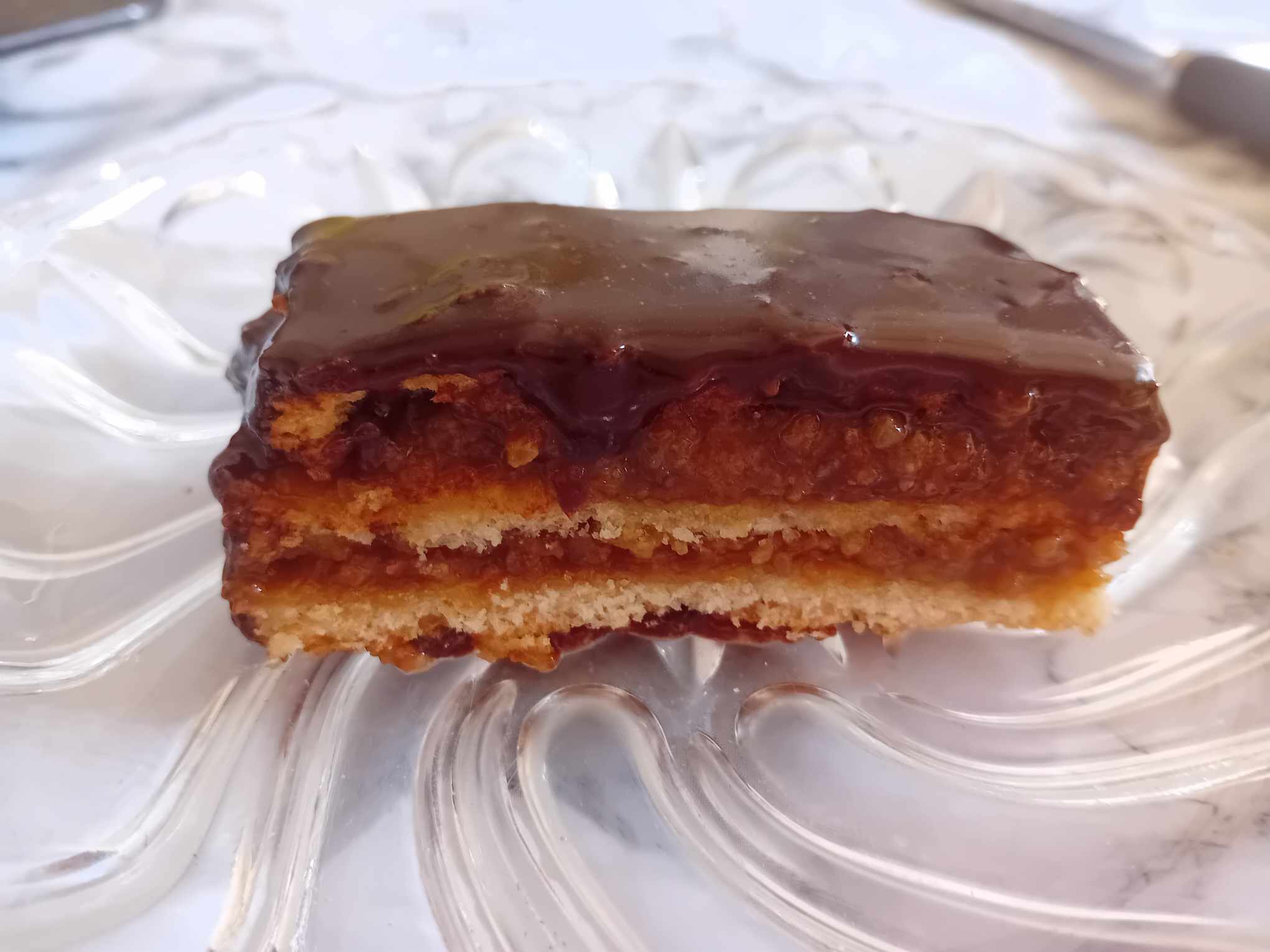Ingredients
Crust:
- Milk 150mL
- Eggs 1
- Sugar 50g
- Dry Yeast 8g
- Flour500g
- Butter 150g
Filling:
- Walnuts 250
- Powdered sugar 250g
- Peach jam 750g
Glaze:
- Powdered sugar 150g
- Dark chocolate 200g
- Milk 20mL
Method
- Place the dry yeast and a teaspoon of sugar in a small bowl and add the warm milk. Mix it, and let it rest for about 10 minutes.
- Place the flout and the cold butter in a separate bowl and crumple them together. Then add the egg, the remaining sugar and the yeast mix into the bowl and knead them together until a smooth dough is formed.
- Cut the dough into 3 equal pieces and let it rest for an hour.
- While the dough is resting, combine the jam, the crushed walnuts with the sugar and set it aside.
- Pre-heat the oven to 180 degrees Celsius.
- Once the dough rested, roll it out into 30x40cm pieces.
- Place the first sheet into a baking tray, spread half of the filling onto it, then place the other sheet, add the remaining filling, and finally, place the last sheet on top.
- Place it into the pre-heated oven and bake it for about 40-45 minutes until the top becomes golden brown.
- In the meantime, melt the chocolate on a bain-marie. Once it melted add the milk and sugar. Mix it well, until it’s evenly combined.
- Pour the glaze while it’s want onto the already cooled cake.
- Let it rest for at least 2-3 hours before serving it.
Fun Facts: The Zserbó is a traditional Hungarian cake. It was invented by Émile Gerbeaud, (Carouge, Canton of Geneva, Switzerland, 22 February 1854 – Budapest, Hungary, 8 November 1919). He practised his craft from a young age. He worked in several confectioneries in Germany, England, and France. He arrived in Hungary in 1884 at the invitation of Henrik Kugler, who, in the absence of an heir, was looking for a partner and a successor to continue his confectionery business. He found it all in Gerbeaud, who impressed the Hungarian confectionery society and soon operated the most popular place in Budapest.
Several other famous traditional Hungarian cakes were first introduced by him like the macskanyelv (transl. cat tongue), the konyakos meggy (transl. cognac sour cherry), the csokoládé drazsé (transl. chocolate dragees) and he was the first in Hungary who sold French cakes filled with custard



